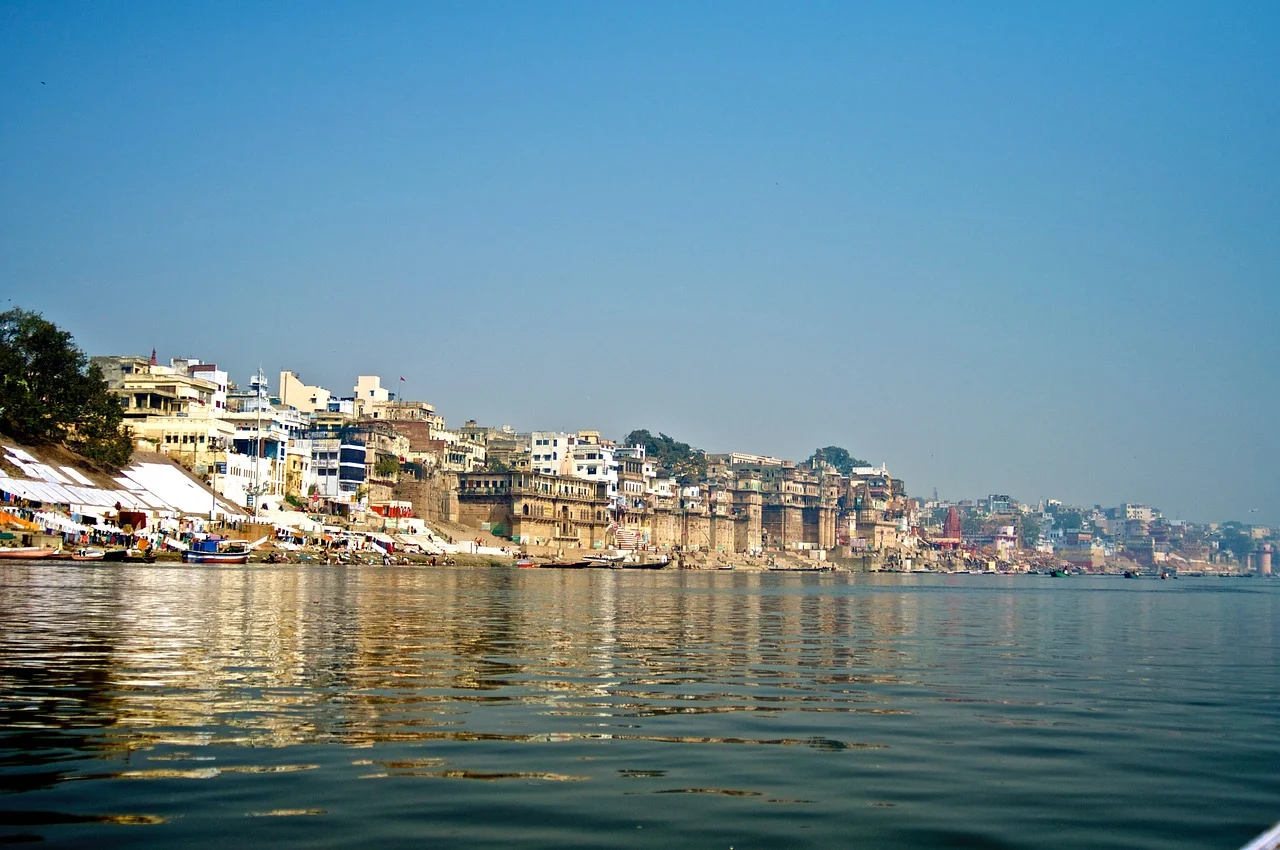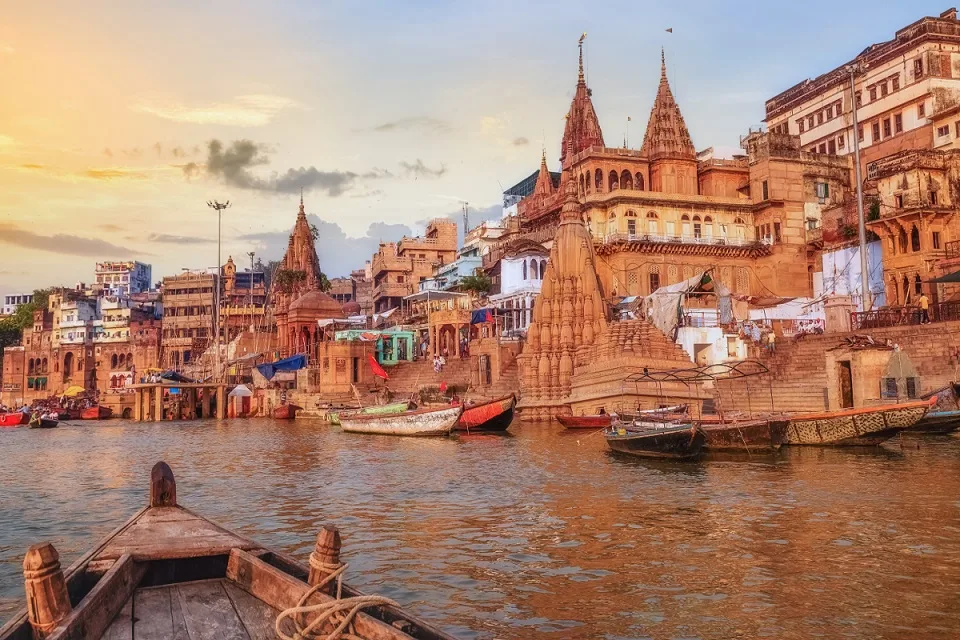Ad Code
Translate
Five Do’s For a Healthy Turnover That Bolsters Talent-Retention
October 20, 2025
Smart strategies for trading on crypto exchanges
October 20, 2025
Discover Honeybee Pharmacy (2025 Guide Important Consumer Tips)
October 14, 2025
10 Effective Strategies to Improve Domain Authority of Your Website
October 20, 2025
What is Ozempic (semaglutide)? (Updated in 2025)
January 30, 2025
How To Find Suitable Properties In Cyprus?
October 20, 2025
Posture Bra: Improving Back Support and Comfort
October 20, 2025
Varanasi, the sacred city of India
Khabza Mkhize
October 25, 2019
In spite of the enormous human, geographical and religious diversity that one can find in the subcontinent, the trip to India is not complete without the visit of the holy city among the saints, Varanasi. Consecrated to Shiva and known throughout the centuries with various homonyms such as Kashi "the luminous", Varanasi during the colonial stage, or currently Varanasi, the city has been beating at the foot of the Ganges River for more than 40 centuries. It is 1 of the oldest town in the world.
Longest river in India
The Ganges is the longest river in India, since from its birth in the Himalayas to its mouth in the Gulf of Bengal it travels more than 2,500 km. It is also the most sacred in that it possesses the virtue of purifying Hindus from all their sins, ending the suffering of life, breaking the cycle of reincarnations (moksa) and attaining enlightenment or nirvana. Varanasi makes a deep impression on the traveler, especially in the west, who perceives a mystical aura that he cannot decipher.Traveling by boat
It begins slowly at dawn on its banks, the grays fade smoothly and a whole range of gold’s and pinks slowly flood the landscape. Traveling by boat on the beautiful riverbank marked by ancient palaces, temples and stairways is a unique experience and that observing life around the seventy-four Ghats that plunge into the river is like observing a dense painting of El Bosco. It was not yet five in the morning, but there were already people doing their morning ablutions in these so revered waters.As spectators, the riverside seems to us like a crowded decoration in which the figures parade, a compact crowd in different activities and attitudes: pilgrims of all ages and castes doing their purifying rituals, sellers of garlands and objects for worship, crippled, rows of beggars, santones and even a varied domestic fauna that ruminates the weeds that grow between the steps of the stairs. Others perform trades on their steps, washing clothes or crockery. The barber attends his clients with great diligence and a young man passes by offering you tea. On the last step, a man with a kind of sieve, and immersed to the knees in the very black mud of the shore, sneaks in search of valuables lost by the deceased, chains, gold teeth ... etc.
Activities
A compact crowd in different activities and attitudes making offerings to the goddess Ganga, from before the sun rises until the deep night. But perhaps what surprises us the most are the cremations that are carried out day and night in the smoking pyres by the river. Because Varanasi is the city of death, and everyone hopes to meet her face to face in this city. Walking through the twisted and chaotic alleys of the Chowk, its oldest neighborhood, people do not seem to notice the colorful bundles wrapped in bright fabrics and garlands that run through them in regular cigars. Death is so present that it is demystified.
Manikarnika, or "temple of ruby earrings", is the most sacred Ghat for the cremation ritual. Its crowded shore never stops smoking. It is said that someday more than 300 cremations have been carried out, and that cremation can be done in an electric incinerator, but to obtain good karma it must be done like this, with firewood and using the fire that has never been for centuries stopped burning, guarded by the same family for generations. It sells it based on what each family can pay. A symbolic price of a rupee or one of a million...
I thought that witnessing a cremation, even if it was from the shore, would be something very unpleasant, and I do not deny that it caused me much respect, but once there I did not feel that way. At night there is a great activity around the Ghats, despite the darkness the human silhouette is perfectly visible behind the red flames, and you realize that it does not cause horror or is unpleasant, it only inspires silence and respect, I would even say that is beautiful. After all, after these flames it is hoped to end the suffering of life and break the cycle of reincarnations, in order to reach Nirvana. And for these people that is everything. It is the meaning of its existence and its culmination.
As I said, the activity never ceases in Manikarnika, around the burning pyres multitude of casteless or untouchables perform all kinds of necessities so that everything comes to a good end, removing the firewood, sparking the flames, relocating remains to half calcine where the flames roar ... the male family of the deceased accompanies him until finally the remains, whether or not consumed with fire are thrown into the river. It is necessary to clarify that the bodies of those who have not known the suffering of life, babies, adolescents ... are not incinerated, but that they are transferred by the doms by boat to the center from the river and there, tied to some weight they are abandoned to their fate (…) Nor is the shrine or sadhus burned.
Immense vultures, alligators, crocodiles, sea snakes and fish have their livelihoods secured with human remains that have not been consumed or with those of those that are not burned and are sent to “rest” at the bottom of the river tied to a large slab. Imagine the bed of the river is a nightmare, however, and despite everything, there are those who drink this water every day and who gets long ... I guess faith is a potent inhibitor of thought and reason, because we surely do not we would voluntarily enter a foot in those waters.
Suggested Tour Varanasi: Private Sunrise Walk Tour in Varanasi (02 hours)
It is curious, but unlike other cities, the wealth of Benares is not in its temples or palaces, which are worthy of praise, but in the life-death that flows along the sacred river, and around its stone staircases that they go deep into it since the night of time ... They are the silent witnesses of fervor and pain and in turn, the accomplices of the ritual.
Disembarking in Manikarnika, allows us to enter the neighborhood of Vishwanath, popularly known as the Chowk, an ancient neighborhood that borders the Ghats, very narrow and gloomy alleys where the sun's rays barely enter and where I'm sure it wouldn't occur to me to walk alone at night. Even during the day it gives a little distrust, because as you go deeper into it you realize that there is no way to orient yourself, or to see what will arise after turning the next corner. More than one has disappeared without a trace in this ancient labyrinth and the battered posters with already faded photos of many foreigners look at us from their walls.
Once inside, a multitude of advertisements and graffiti on the walls show us access to temples, guest houses, yoga schools, stalls on second floors ... and all kinds of constructions come out, which one does not really know if they are dilapidated or half built, or both. Powerful roots emerge from the facades of ancient buildings that literally encompass them ... or are it the other way around? From the roots arise the foundations that support them? In reality, everything is possible here, where urban chaos creates prints that are impossible to balance and space, and where constructions are piled against each other.
Rusty lattices, moldy and chipped walls, almost extinguished paintings like the tattered girones of a tapestry ... The brown colonies of pigeons watch us from the black tangles of the electrical wiring that cross from one building to another ... and, nevertheless, here there is life, color and curious everyday prints a few meters from the funeral pyres. Because Chowk is a lively neighborhood and there is everything. Tiny business-housing, insistent street vendors, beggars, walking sticks, clueless tourists, military and many cows! Everyone crosses into the maze.
We found the Golden Temple, well, it is a replica of the original that was razed by Aurangzeb, and is completely hidden between these alleys. Within its perimeter there are armed soldiers and a metal detector arch, which I suppose does not work but intends to intimidate. Actually too much history to not be able to access inside and to settle for seeing only its golden domes from the tangled upper window of a tissue store. The Golden Temple has been the target of attacks by Muslims in the past, and hence this deployment. The truth is that we cannot see the lingam of Shiva, which is what gives it the title of the most sacred temple in the city.
They say that here in Varanasi is where you can really observe the true Indian psychology, and it is here that we really see the strong interaction between religion and everyday life, where we assimilate things a bit.
I did not like the modern city because of the absolute chaos in which it has been immersed, but this riverbank has shocked me, I think it is beautiful and very spiritual. I have found more than I expected and I take with me a strong impression of this physical and human landscape that has undoubtedly touched me more than all the beautiful temples and ruins that we have left behind on the road. Essential.
Featured Post
DL Mining Launches Ethereum Contract Participation Service, Helping Users Earn $2K Stable Daily Returns
Zizo Gala-Mkhize-
October 20, 2025
Soapie Teasers
Sister Sites
Most Popular
List of 6,000+ Dofollow Commentluv Blogs FREE (Updated 2025)
January 16, 2025
Five Do’s For a Healthy Turnover That Bolsters Talent-Retention
October 20, 2025
Smart strategies for trading on crypto exchanges
October 20, 2025
Popular posts
List of 6,000+ Dofollow Commentluv Blogs FREE (Updated 2025)
January 16, 2025
What is Ozempic (semaglutide)? (Updated in 2025)
January 30, 2025
Five Do’s For a Healthy Turnover That Bolsters Talent-Retention
October 20, 2025
Footer Menu Widget
Created By Blogspot Theme | Distributed By Gooyaabi Templates



Social Plugin